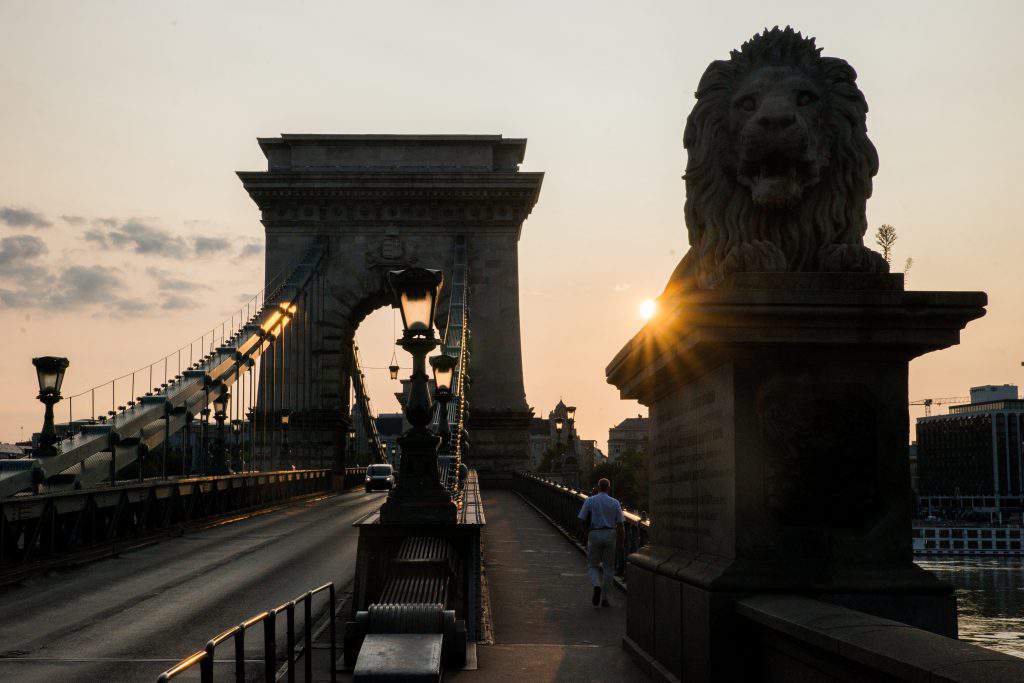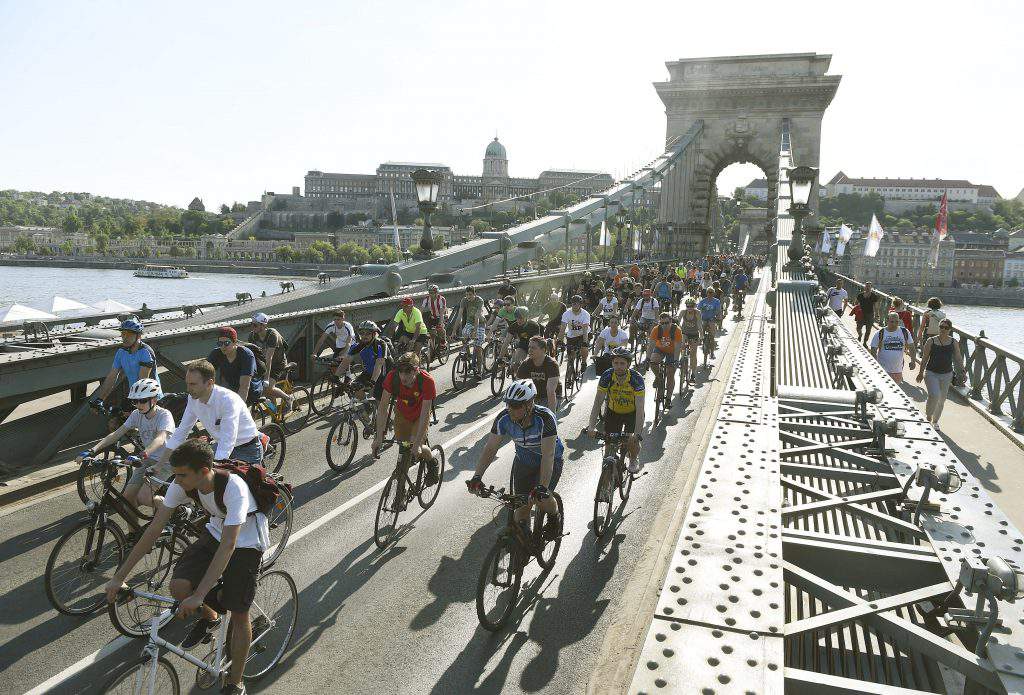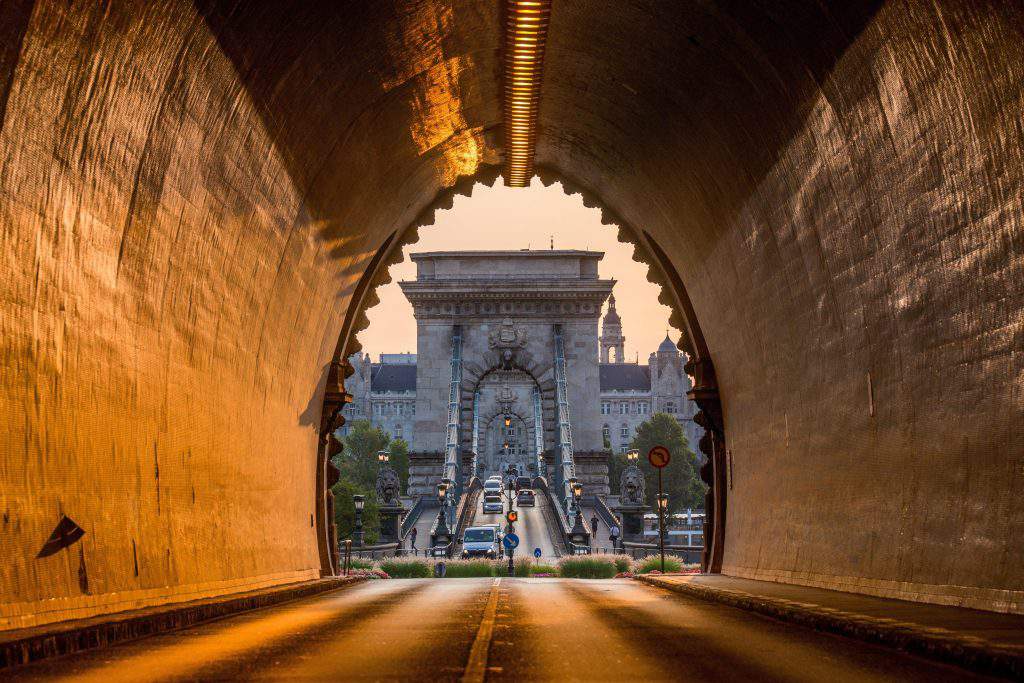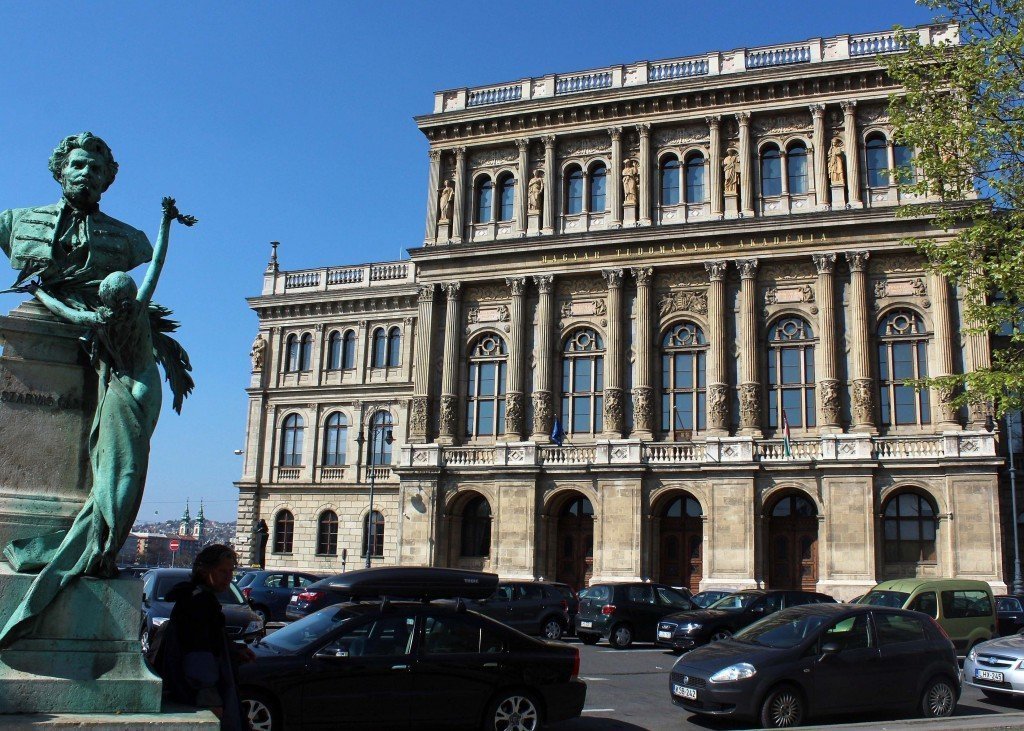Chain Bridge to be in traffic chaos for up to 7 years

According to 444.hu’s report, plans frequently change in Budapest, the Hungarian capital. In February this year, the idea was to renovate the Chain Bridge, the tram tunnel on the Pest side of the bridge, the Buda Castle Tunnel and Adam Clark Square all at the same time. Since then, these projects have been moved further away from each other in time, presumably because of lack of money.
Change of plan
Originally, all renovations were planned to be complete in only three years, meaning the bridge would have had to be shut down only until 2021. However, the schedule has changed since then. Chain Bridge is expected to be renovated between 2018 and 2021, from a sum of 11.1 billion Forints (about 35 million EUR). The tram tunnel requires 5.2 billion Forints (16 million EUR) and is expected to be completed by 2020. Renovating the Tunnel would start only in 2021, lasting until 2024, using 5.7 billion Forints (19 million EUR), while works on Adam Clark Square would take place between 2023 and 2024, requiring a sum of 392 million Forints (1.2 million EUR). The new plans mean that the bridge in the city centre could not be used for 7 years.

According to the new plans published in April, Chain Bridge and the tram tunnel under István Széchenyi Square will be renovated between September 2018 and June 2019. The budget planned is 16.4 billion Forints (52 million EUR).
Deadline or budget for the renovation of the Tunnel or Adam Clark Square have been omitted, and these projects got renamed as the 2nd phase of the process.
Why is the delay a big deal?
Many might believe that the number of years the bridge will be closed down is only important to citizens complaining about losing their comfort for a while. However, since Budapest is planning to invest a lot of money (709 million EUR) in the project, it actually does matter how long the renovation will last.
The point of such a project is to improve the situation for citizens and commuters. The benefits usually last for about 30 to 40 years, but, if the people regularly using that route have to bear seven years of inconvenience, then up to a fifth of what is gained could be lost.
The too slow, maladministered works resulting in traffic jams and worsened conditions would lessen the profits significantly.
The situation of the local government
The outrage caused by the renovation of metro line M3 urged the capital to add further lifts to the project between 2018 and 2023, for which they needed a 5.6-billion-Forint budget (18.7 EUR). This news is a major improvement to the project, even if it means that the money will probably come from the sum assigned for the renovation of the tunnel. The two budgets are about the same, so it is no wonder that completing one of them will take a few years longer.
Most of the tasks and resources of the local government have been taken over by the Hungarian government. The projects the local government still has authority over include BKK (Budapest Transport Centre), BKV (Budapest Transport Company), tending to parks and dealing with traffic issues. The hands of the local government are tied; basically, all their funds have been spent on projects up to 2020.
The capital cannot get a loan because it is already seriously indebted. The government took on some of these debts, in exchange for having the authority over when and what kind of loans the local government can apply for.
This means that often loans for the projects favoured by the government get approved or that certain business circles are needed to succeed.
The current state of the bridge
The life expectancy of the ferroconcrete elements is about 100 years, with other main parts expected to last around 30 years. So, this renovation will determine for a long time what traffic will be like on the oldest and most well-known bridge of Budapest. Because the plan is to rebuild the old structure, that might not be such good news.
On most days, constant traffic jams cover the bridge, and the sidewalks are full of tourists. Since there is no pedestrian crossing, tourists always cause trouble crossing the street through the warped barriers on both sides of the bridge.

Doing this legally requires a small excursion to get to the other side of Széchenyi Square, and to reach the pedestrian way leading to the Basilica, the only option is to make an illegal shortcut.
Since tourists are a major income factor for the capital, it is especially sad that thousands of them have to deal daily with such sorry conditions at such a major sight of the city.
Is it necessary for cars to pass through the bridge?
According to information from BKK, around 20 thousand transport units pass through the bridge both ways each day, and buses are reported to have 14-15 thousand passengers. Transportation engineers consider cars to be one unit, with an average of 1.2 passengers, while a bus counts as 2.5 units, with the 14-15 thousand passengers mentioned. So, what this means is that
around 37 thousand people cross the bridge, 40% of whom use public transport.
However, because of the constant traffic jams, the buses of the area are very unreliable. Many people choose to go a different route instead of waiting for them or enduring the elongated journey time. So, considering this, if almost half of the people crossing the bridge choose to use public transport despite the poor conditions, major improvements could be made by focusing on developing this aspect.
It is interesting to consider what effect only letting buses, taxis and bikes onto the bridge would have. It would not necessarily be bad news for cars, either, since traffic jams really slow them down on both sides of the bridge.
Not to mention the decisions bikers have to make – only those with enough confidence and experience dare risk slalom through the vehicles, beginners and children have to resort to the narrow sidewalks, which is unacceptable.
Nevertheless, BKK already declared that there would be no changes made on the bridge, not even a slight widening of the sidewalks. Only traffic signs indicating the new 40 km/h speed limit will be added, as a weak attempt to protect cyclists – somewhat lessening the glorious expectations stemming from the promise of the 11-billion-Forint budget (35 million EUR).
Slight improvements planned
Several superficial solutions have been hinted at. The new underpass under Adam Clark Square will be slightly wider, but not wide enough that it will not be dangerous for pedestrians and cyclists to pass each other, still requiring the 10 km/h speed limit restriction. The only well-developed idea for improvement has been said in connection with the Buda Castle Tunnel.

The whole ventilation system is planned to be replaced so that people choosing to walk all the way through will not run out of air. However, these plans have been postponed for an undeclared period of time.
A new cycling path will also be built coming from Pest to Buda. Towards the Danube, where the road goes downhill anyways, new cycling trails will be added.
Original plans
However, there are still many unanswered questions. Neither BKK nor the local government provided any explanation as to why there was no attempt to get in on a loan scheme, for example. It would have been worth a shot in order for the renovations to happen around the same time.
It seems pointless to shut down the Chain Bridge for 5 to 7 years first, then to shut down the Tunnel, all the while only making superficial changes.
The capital has spent a fortune on getting the plans for the renovation done. News broke out already in 2011 that Széchenyi Square could get a new facade – nothing has happened since and it is likely that nothing will be complete by 2021, either, 10 years after the initial news appeared.
The plan was to have cars turn directly onto the bridge in the direction of Attila József Street, eliminating the initial big circle.
This way, half of the Square would be relieved of traffic, making room for more green areas. Not to mention how much easier it would be for tourists to have a direct route between the bridge and Pest city centre.
There were plans to renovate the coast of the Danube between Kossuth Square and Fővám Square, too. No progress has been made since 2016, though. None of the winning ideas such as traffic alleviation, more green areas or more direct connection to the Danube seems close to implementing their positive effects. The local government declined to give any information about the progress of this project.
Interesting is the fact that the proposed plan also mentions a garage to be built under the MTA (Hungarian Academy of Sciences) building. Hopefully, though, that was just misspelt, and there are no actual plans to start digging under the building. The government remained silent on this issue as well, so there is no information about who is behind the plans and how big the garage would be.

The building of another underground garage on József Palatine Square has already incited heated debate. It seems pointless to create more parking spaces in an area where traffic jams are already frequent.
The new spots would just attract more vehicles, worsening the situation. Another sore point of the project is that there seem to be no plans to improve public transport.
With a 22-billion Forint (70 million EUR) project that is likely to determine the traffic situation of the capital for the next 30 years, that seems like a waste.
A possible silver lining for the taxpayer, however, could be that with all the delays going in, there will probably be ample time to reconsider the decisions over and over again.
Until the renovated Chain Bridge gets done, let’s look back on its most interesting moments in history!
Source: 444.hu





